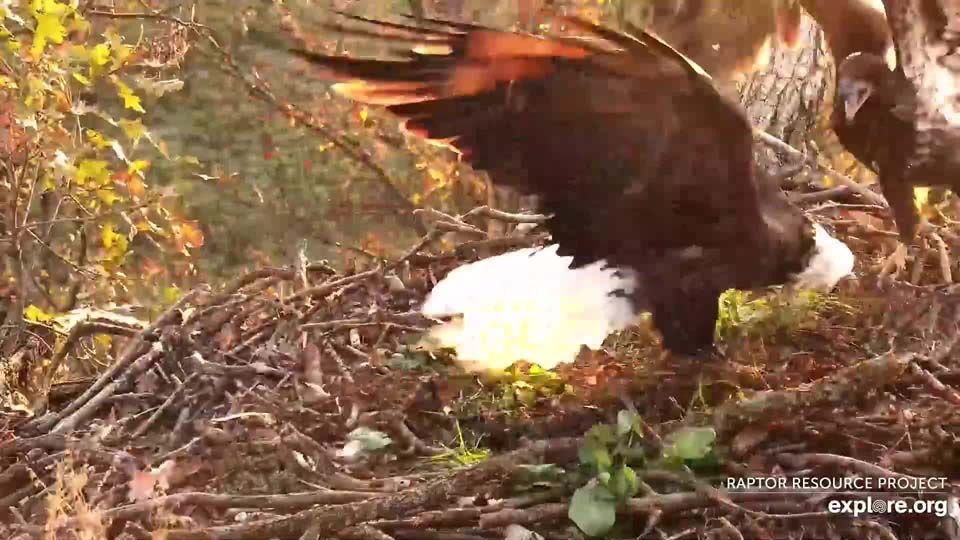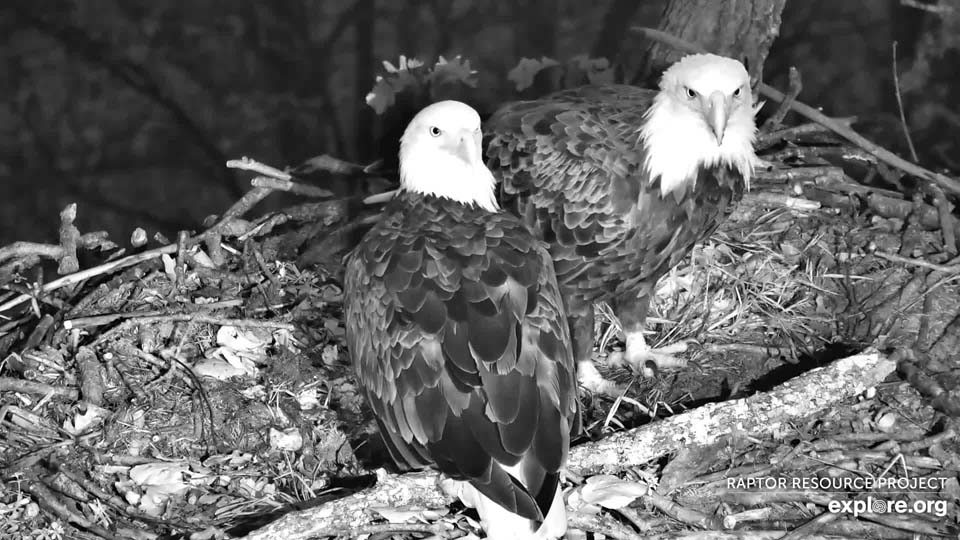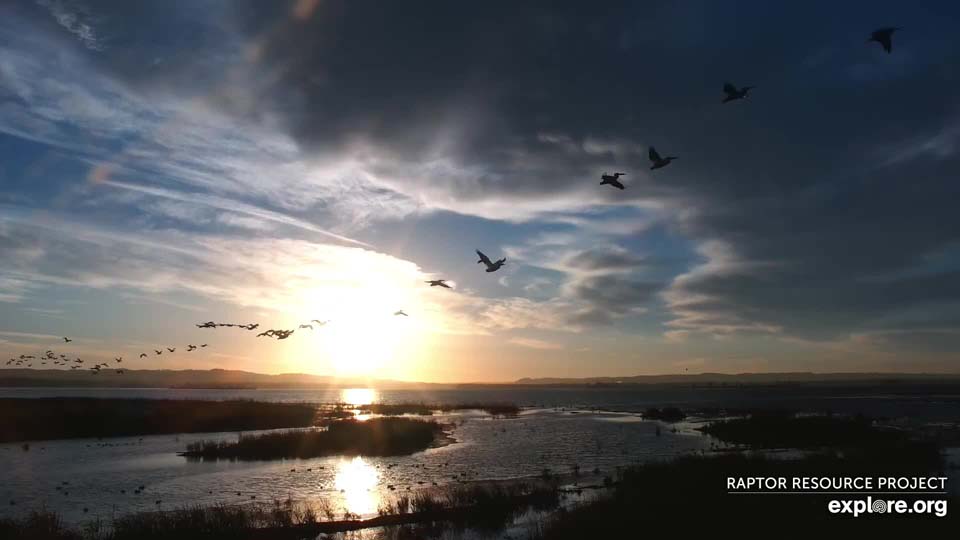It’s NestFlix for Breakfish! In Decorah, DNF’s morning repast is interrupted by a juvenile eagle. Could it be DN13 or DN14? We have more information about that in the round-up! I’m sure that a lot of us swooned over close-ups of Mr. North, but I also enjoyed seeing the nest taking shape in Mr. North’s breakfish video. Eagles are early risers, so if you want to see live nestorations this time of the year, you’ll need to tune in at about 6:30 AM CT…or read our posts! Looking for Flyway videos? We’ve included sandhill cranes and foraging muskrats here, but I really suggest tuning in. It’s impossible to express the beauty of the Flyway right now in one picture or video. So many colors! So many songs! So many migrating birds!
As always, thanks to our camera operators and videomakers for finding and preserving such special moments, and to you for watching, sharing, learning, and caring. If you are making Flyway videos and posting them on youtube, please give me an email – I would be happy to follow you!
Decorah North Eagles

October 19, 2021: DNF does not want to share her breakfish!
October 18, 2021: DNF’s breakfast – https://youtu.be/erz8cI9H8CI. This video proceeds peacefully until 13:38, when a juvenile visitor drops into the nest to share breakfish! DNF quickly boots the intruder, who flies out to perch in the middle of the pasture before flying west below the nest and presumably up the hill.
Is this DN13 or DN14? Some of our juvenile and subadult eagles have returned to their natal area in October, including D1, D27, and Four. Curious about who it is? Our female eagles have been more likely to make an October return to the nest area and we think DN14 might be a female based on time-to-fledge (83 days) and size. So IF this was a 2021 fledgling (note the all-caps IF), it was more likely DN14 than DN13 based on our eagle study. It seemed confident of a welcome and familiar with the area!
October 18, 2021: Close-up Mr. North – https://youtu.be/hp94ODniHuk. Heart be still! Wonderful close-ups of Mr. North, including eye detail, commissure, cere, beak, and head feathers. Sometimes we learn, sometimes we laugh, and sometimes we just stare in awe.

October 19, 2021: 6:30AM nestorations. Mr. North left, DNF right
October 18, 2021: Mr. North eats a fish on the nest – https://youtu.be/LFx-Oh1ubn4. I enjoyed watching Mr. North eat a little breakfish – I am 100% here for breakfast sushi and kedgeree! – but I also enjoyed seeing the nest. Other than a quick measure, we really didn’t do much to the nest. But in this video, we can see the nest bowl starting to take shape as Mr. North and DNF move sticks, dig in the nest, and move around. I’ll be curious to see what this year’s remodel looks like!
How large is the North nest? At its widest diameter, the north nest measures 12 feet (east/west) by 8.25 feet (north/south). The internal measurement, aka the nest bowl, measures 6 feet (east/west) by 6.25 feet (north/south).
Mississippi Flyway

October 19, 2021: Morning migrators on the Mississippi Flyway
October 17, 2021: Bathtime for the sandhill cranes – https://youtu.be/zSq81cM8nQ8. A group of sandhill cranes bathe and preen! They fold their long legs to dip down and splash water over their backs, dunk their heads and waggle their wings, and sometimes roll sideways in the water (see 1:33 for that last one).
October 17, 2021: Muskrats – https://youtu.be/sp4DhjOQqYk. Eyes in the night! Two muskrats forage along the edge of the island, digging for roots and tubers in the soft mud and sand. We get a close-up of one of them at 1:38. Even in the water, its dense, water-resistant pelt keeps it warm and dry. Only its long dark guardhairs appear wet.
Female muskrats can bear up to three litters of three to eight young per year, so it is no surprise that they are prey for a wide variety of animals, including bald eagles. Like sandhill cranes, these animals seek habitat that is (relatively) safe from most land-based predators. Nocturnal foraging helps keep them safe from diurnal avian predators, although they are sometimes active during the day and all of the eagle couples we watch prey on them. The Decorah North eagles brought in 21 muskrats during the 2020/2021 season.
Are these two muskrats mates? Despite the interaction at 7:45, I suspect they are mates or family of some sort. Muskrats live in large territorial family groups and kits stay with their families until mothers kick them out. While the two got in each other’s furry faces, it really didn’t look like a serious territorial interaction. Learn more here: https://en.wikipedia.org/wiki/Muskrat. Oh, and since this turned up when I was reading about muskrats…https://youtu.be/KgCk3bnvO5Y
 The Raptor Resource Project
The Raptor Resource Project The Raptor Resource Project
The Raptor Resource Project